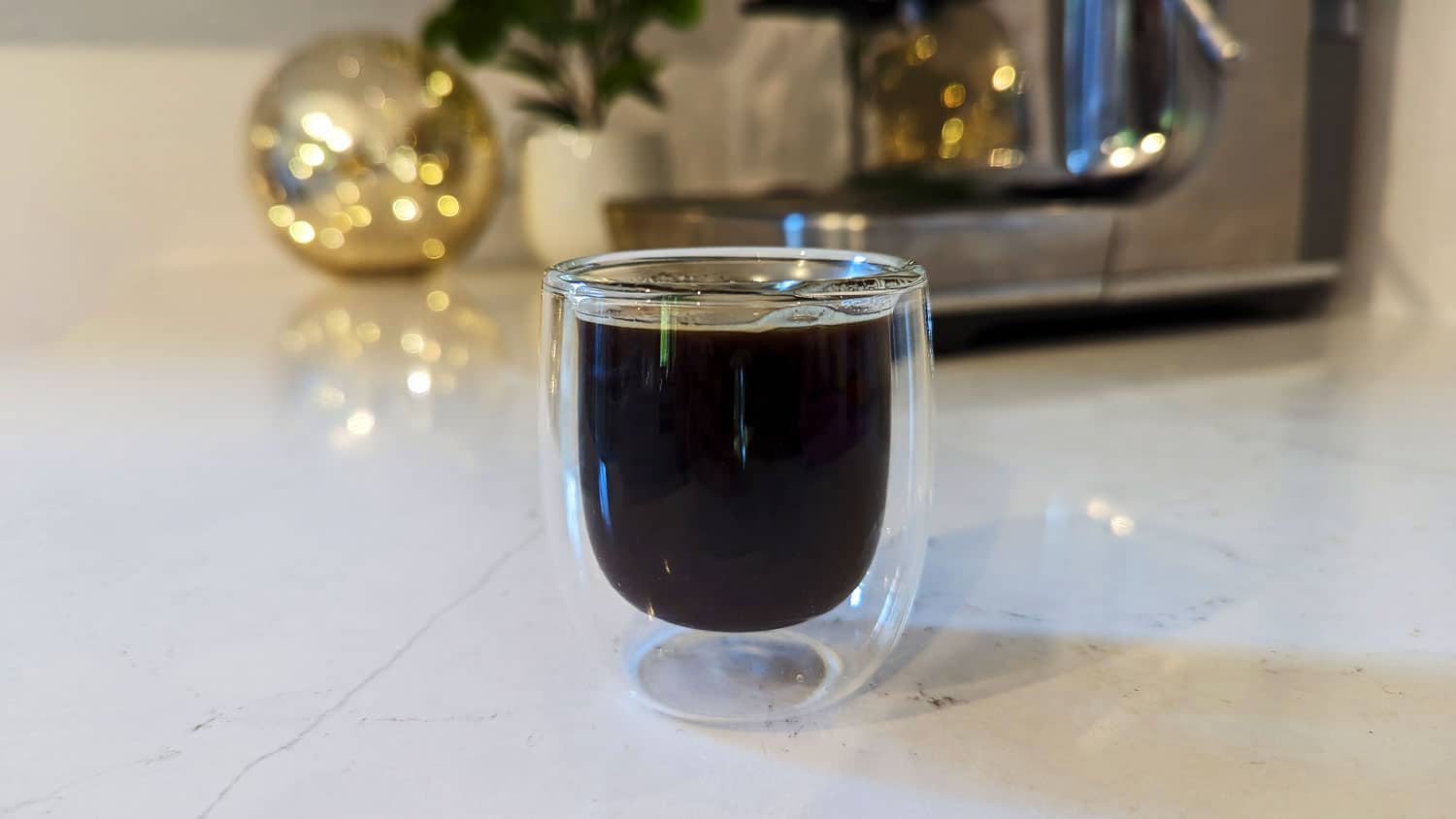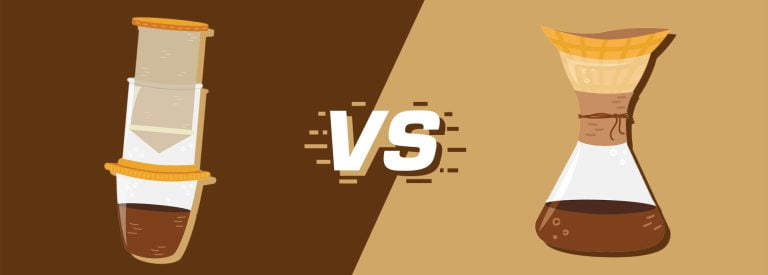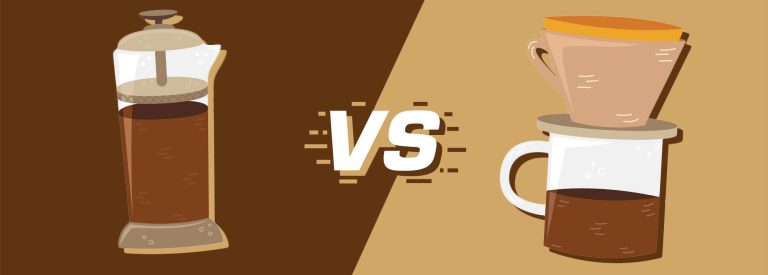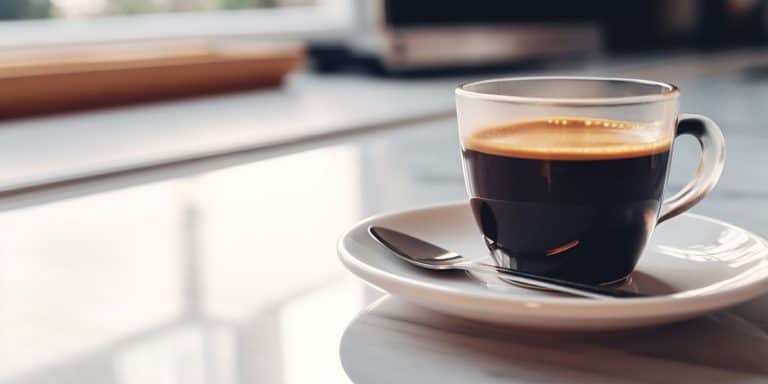Lungo vs Ristretto: Longer or Shorter Shots of Espresso?
Espresso changed the way the world consumes coffee, but did you know that there are different ways to brew espresso? Varying the recipe results in very different drinks.
This brings us to the lungo and ristretto. Both are variations of the espresso, but they have different coffee-to-water ratios and brew times.
In this article, we’ll go through the exact recipes, how they taste, and many more aspects that set these drinks apart.
Key takeaway: What’s the difference between a Lungo and a Ristretto?
The Lungo, with a coffee-to-water ratio of 1:4 to 1:5, results in a larger 2 oz serving that is robust and slightly bitter. The Ristretto, conversely, has a concentrated 1:1.5 ratio, leading to a 0.7 oz shot with intensified sweet, acidic, and aromatic notes with no bitterness.
Let’s have a look at the details.
What is a Lungo?
A Lungo, deriving its name from the Italian word for “long,” is a unique twist on the traditional espresso. How does it differ? It involves more water flowing through the ground coffee, yielding a larger serving than the standard espresso shot.

When preparing a Lungo, the amount of coffee grounds remains the same as espresso, 7g per shot (or 9g for third-wave coffee). The difference is that you lengthen your water flow to achieve a coffee-to-water ratio of 1:4 to 1:5. The resulting beverage will be around 2 oz, and can be served in a 3 oz (90 ml) espresso demitasse. A lungo, much like a pure espresso, contains 60 to 80mg of caffeine and has virtually no calories.
Onto the flavor, the Lungo maintains a robust, slightly bitter taste but is less dense than the normal espresso. The thing you need to be careful with here is that the longer extraction can introduce more bitterness to your brew. You can coarsen your grind size to let more water flow through the puck at a faster rate, but this is why I generally don’t prepare lungos at home. Changing my carefully dialled-in espresso grind size is a pain, and I don’t want to let it run longer on my espresso grind size, since that’ll make it bitter.
As for its texture, the Lungo is somewhere between the espresso and the more fluid Americano. Not too dense, but not too watery.
Here’s a quick guide to making a Lungo using coarser grinds:
- Grind your coffee beans a little coarser than you would for an espresso.
- Use a timer and scale for accurate brewing measurements.
- Stop the brewing around the 35-second mark to achieve a 1:4 to 1:5 brewing ratio.
For a detailed Lungo recipe, you can read my comprehensive guide on how to make a Lungo.
Now let’s check out the ristretto.
What is a Ristretto?
Ristretto is an Italian word meaning “restricted,” because this espresso variant has a limited amount of water compared to your standard espresso shot. Ristretto uses a concentrated 1:1.5 ratio, achieved by stopping the normal extraction of the espresso earlier.

A ristretto also uses 7g of coffee grounds (or 9g for third-wave coffee), similar to an espresso, but the water content and extraction time are both reduced. This results in a more concentrated 0.7oz (20 ml) serving, suitable for your 2 oz to 3 oz (60–90 ml) demitasse cup. Each serving contains 60 to 80mg of caffeine and a mere 2 calories. This is the same as the lungo (and espresso for that matter), since the caffeine is extracted at the beginning of the brewing process.
For flavor and feel, the ristretto has a stronger flavor emphasizing the naturally sweet, acidic, and aromatic notes of your brew while lowering bitterness. It is also more velvety and dense despite having a thinner crema layer.
Make a ristretto with these simple steps:
- Grind your coffee beans finely, just like with a normal espresso.
- Put the grounds into the filter basket.
- Tamp the coffee grounds firmly and evenly.
- Secure the portafilter into your espresso machine.
- Extract a shot for a brief 15-18 seconds.
For an in-depth recipe of this coffee, read my step-by-step guide on how to make a Ristretto.
Lungo vs Ristretto: What’s Are the Differences?
To understand the similarities and differences between the lungo and ristretto better, here’s an overview of their features:
| Aspect | Lungo | Ristretto |
|---|---|---|
| Taste and Texture | Strong, somewhat bitter, less syrupy than espresso | Concentrated, bold, dense, and syrupy |
| Coffee-to-Water Ratio | 1:4 to 1:5 | 1:1.5 |
| Ingredient Ratio | 7g (traditional) to 9g (specialty) ground coffee | 7g (traditional) to 9g (specialty) ground coffee |
| Typical Serving Size | 2 oz (60 ml) | 0.7 oz (20 ml) |
| Caffeine Content | 60-80 mg per shot | 60-80 mg per shot |
| Calories | 2 calories per shot | 2 calories per shot |
| Acidity | Moderate | High |
| Brewing Difficulty | Intermediate | Intermediate |
| Bean Roast | Light to medium roasts preferred | Medium roasts strike the balance; light can be too bright |
Here’s a detailed comparison between the two coffee drinks:
- Ground Coffee Weight & Ratios: Both the lungo and ristretto use 7g of ground coffee (9g for third-wave coffee) per shot. It’s the amount of water that makes the difference. A ristretto uses a 1:1.5 coffee-to-water ratio while the lungo requires a larger 1:5 ratio.
- Taste: Because more water was used, a lungo is less overpowering than the ristretto, and comes with hints of bitterness. Ristretto does the opposite, offering a more intense drink with sweet, acidic, and aromatic notes while reducing bitterness.
- Volume, Calories, & Caffeine: Lungo is served in larger volumes of 2 oz to 3 oz, while Ristretto is limited to a 0.7 oz shot. Despite their volume differences, both have 60 to 80mg of caffeine and 2 calories.
- Bean Roast: When brewing lungo, I go for light to medium roasts that help balance the slightly bitter profile caused by the longer extraction. I use medium roasts for ristretto because of their intensity, and going for lighter roasts makes the coffee too bright and acidic.
- Serving Suggestions: If I’m being honest, I don’t really like making a lungo because it can easily become bitter. Instead, I just pull a shot and add water to make an Americano. But the ristretto is a different story, I often pair it with small sweets such as truffles and cookies, making a perfect post-meal treat.
So as you can see, these drinks are polar opposites. The one thing they do have in common though is that they need good beans, so make sure to read my guide on the best espresso coffee beans in 2025.
Conclusion
If it’s a showdown between lungo and ristretto, I prefer the latter. That’s just me though, and the better drink is always subjective.
What about you, which one do you like better? Let me know your thoughts in the comments section below.








